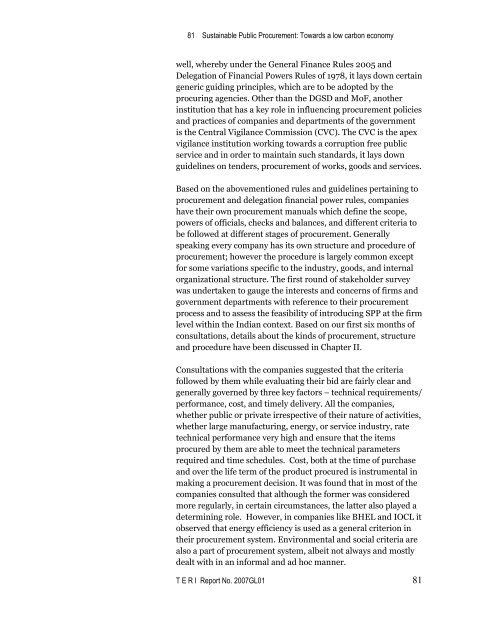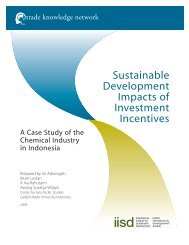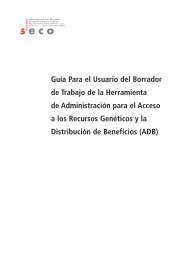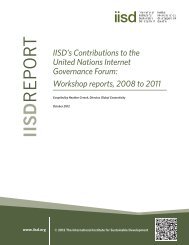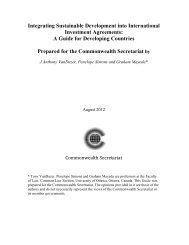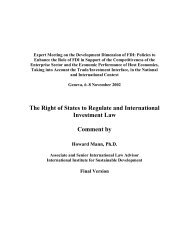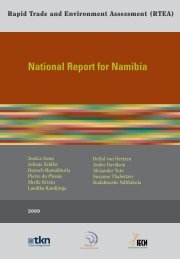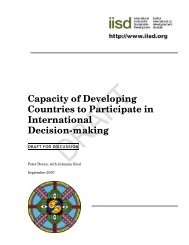Sustainable Public Procurement: Towards a lowâcarbon economy
Sustainable Public Procurement: Towards a lowâcarbon economy
Sustainable Public Procurement: Towards a lowâcarbon economy
Create successful ePaper yourself
Turn your PDF publications into a flip-book with our unique Google optimized e-Paper software.
81 <strong>Sustainable</strong> <strong>Public</strong> <strong>Procurement</strong>: <strong>Towards</strong> a low carbon <strong>economy</strong><br />
well, whereby under the General Finance Rules 2005 and<br />
Delegation of Financial Powers Rules of 1978, it lays down certain<br />
generic guiding principles, which are to be adopted by the<br />
procuring agencies. Other than the DGSD and MoF, another<br />
institution that has a key role in influencing procurement policies<br />
and practices of companies and departments of the government<br />
is the Central Vigilance Commission (CVC). The CVC is the apex<br />
vigilance institution working towards a corruption free public<br />
service and in order to maintain such standards, it lays down<br />
guidelines on tenders, procurement of works, goods and services.<br />
Based on the abovementioned rules and guidelines pertaining to<br />
procurement and delegation financial power rules, companies<br />
have their own procurement manuals which define the scope,<br />
powers of officials, checks and balances, and different criteria to<br />
be followed at different stages of procurement. Generally<br />
speaking every company has its own structure and procedure of<br />
procurement; however the procedure is largely common except<br />
for some variations specific to the industry, goods, and internal<br />
organizational structure. The first round of stakeholder survey<br />
was undertaken to gauge the interests and concerns of firms and<br />
government departments with reference to their procurement<br />
process and to assess the feasibility of introducing SPP at the firm<br />
level within the Indian context. Based on our first six months of<br />
consultations, details about the kinds of procurement, structure<br />
and procedure have been discussed in Chapter II.<br />
Consultations with the companies suggested that the criteria<br />
followed by them while evaluating their bid are fairly clear and<br />
generally governed by three key factors – technical requirements/<br />
performance, cost, and timely delivery. All the companies,<br />
whether public or private irrespective of their nature of activities,<br />
whether large manufacturing, energy, or service industry, rate<br />
technical performance very high and ensure that the items<br />
procured by them are able to meet the technical parameters<br />
required and time schedules. Cost, both at the time of purchase<br />
and over the life term of the product procured is instrumental in<br />
making a procurement decision. It was found that in most of the<br />
companies consulted that although the former was considered<br />
more regularly, in certain circumstances, the latter also played a<br />
determining role. However, in companies like BHEL and IOCL it<br />
observed that energy efficiency is used as a general criterion in<br />
their procurement system. Environmental and social criteria are<br />
also a part of procurement system, albeit not always and mostly<br />
dealt with in an informal and ad hoc manner.<br />
T E R I Report No. 2007GL01 81


